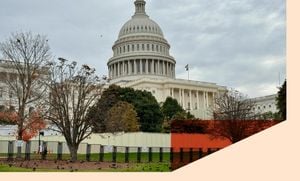The Supreme Court of India has recently been at the center of discussions surrounding its new Chief Justice, D. Y. Chandrachud, whose tenure has sparked both admiration and critique alike. On one hand, his contributions are celebrated for their innovative approach; on the other, some critics have expressed doubts about his legacy as he moves on from his role as Chief Justice.
D. Y. Chandrachud, who retired from his position as Chief Justice just last week, served with distinction over his tenure at the Supreme Court, delivering approximately 612 judgments across various areas including service, criminal law, and constitutional rights. His commitment to tackling cases relevant to the public interest has been noted as part of the legacy he leaves behind. Those familiar with his work acknowledge the breadth and depth of his contributions, along with the bold ideas he entertained within his judgments.
Despite this extensive record, Chandrachud faced intense scrutiny, particularly concerning his off-bench activities. Critics claimed these distractions may have impacted his judicial decisions. This criticism raises questions surrounding the very nature of judicial independence, which is crafted not as absolute autonomy but rather as independence within certain dependencies legislated by Parliament. The inherent limitation on the powers of the Chief Justice accentuates the complicated relationship between the judiciary and executive branches within the Indian political ecosystem.
Collaboration between the judiciary and the executive is not without its tensions. Chandrachud recognized the need for what he termed as “robust consultation” between these two entities. Yet, concerns persist about the proximity and collaboration which could threaten the judiciary's integrity. He emphasized the need for the public to trust judges and shared his commitment to maintaining clear boundaries when it came to their respective roles, stating, “the dialogue is purely on the administrative side and never involves the cases we decide.”
Chandrachud’s faith and public displays of it have also drawn interest and controversy. He insisted upon the constitutional right to freedom of conscience, which theoretically allows every citizen to hold personal beliefs without diminishing others' rights. His actions concerning religious displays highlight the delicate balance judges must maintain between personal beliefs and judicial impartiality. This balance has been the subject of considerable debate about the independence and objectiveness of the judiciary.
From constitutional review to administrative roles, Chiefs Justices like Chandrachud hold significant power. One of the more pressing matters under his purview was addressing how past judgments are interpreted, especially those hinging on social and economic rights. Instances of harsh rhetoric against past judgments have raised eyebrows and sparked discussions about respect toward former justices and their contributions to Indian law.
Looking forward, it is clear the new Chief Justice has quite the legacy to uphold. The Supreme Court recently introduced its new statue of Lady Justice as part of this clean break from colonial roots. Traditionally, this figure was depicted wearing blindfolded, but the latest incarnation shows her with open eyes and holding the Constitution instead of the traditional sword. This transformation echoes the shifting justice priorities as the court aims to be more reflective of India's diverse demographics, acknowledging social injustices and urging full constitutional engagement.
The symbolism of the open-eyed Lady Justice highlights the importance of recognizing and addressing systemic disparities within the legal framework. This becomes especially significant as India's judiciary continues to face challenges such as excessively long backlogs of cases—current numbers indicate over 80,000 pending cases before the Supreme Court and more than five million scattered across lower courts. For just these changes to have genuine power, structural reforms need addressing the case backlog, enhancing the accessibility and reach of justice, and removing any barriers preventing equitable legal representation of marginalized communities.
Barriers such as costs, lack of legal knowledge, and existing biases within the court system can hinder access to the law, particularly for vulnerable populations who already experience social disparities. While the new Lady Justice symbolizes hope for improvement, it is clear such hope must be met with tangible reforms. Chandrachud’s successor will have this heavy task on their shoulders if true justice is to resonate within the framework of the Indian Constitution.
Judicial independence is noted as another pivotal matter, especially amid recent accusations of political influence over judicial decisions. Whether the judiciary can remain impartial is of intrinsic importance, as the judiciary fills its role as the guardian of constitutional integrity, upholding values such as equality and liberty as mandated by the Constitution.
The Supreme Court's decolonial voyage does not end with Lady Justice's symbolic transformation. Elements of India’s legal framework still hark back to its colonial past. The judiciary's evolution continues to require not just symbolic change but substantial, innovative reforms for it to genuinely meet the population's needs. Improved representation within the judiciary mirrors India's diverse society, yet it remains painfully low. While the recent reports indicate some progress, the overall numbers do not reflect the true demographic makeup of India, with women and other minorities still vastly underrepresented.
Enhancing women’s participation and ensuring other marginalized voices are adequately represented can render the judiciary more transparent and approachable. More so, measures like transparency through live-streaming court proceedings and ensuring public access to judgments could establish accountability and build trust with the larger public.
Conclusively, the Supreme Court, under its new leadership, has the monumental task of embodying the ideals represented by its recently unveiled statue of Lady Justice. Moving forward, this transformation requires more than visual symbolism; it demands substantive actions to rectify longstanding issues. The path to swifter, fairer, and more accessible justice is fraught with challenges, but it is through these efforts the judiciary can assure its place as the harbinger of true constitutional values—justice for every citizen.



